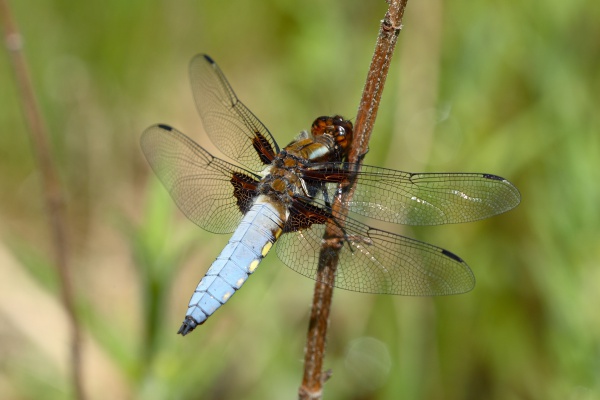Facts About Libellula depressa
The broad-bodied chaser, or Libellula depressa, is a prevalent dragonfly species commonly observed across Europe and central Asia. This species is readily identifiable, particularly the males, due to their broad, flat blue abdomens. Both males and females feature striking yellow patches on their brown bodies, accompanied by dark wing patches and pronounced stripes near their shoulders.
These dragonflies are quite the adventurers, inhabiting central and southern Europe, parts of central Asia, and the Middle East. Their range even extends to Scotland, Sweden, and Finland. Typically, they are found near still-water lakes and ponds, where they hunt for small insects. One noteworthy characteristic of Libellula depressa is its propensity for quickly colonizing new habitats, often being the pioneer dragonfly species in such areas. As adults mature, they don't remain confined to aquatic environments and can often be observed venturing further afield.
The optimal time for observing these dragonflies is from April to September, with peak activity occurring in May and June. Known for their rapid flight and territorial behavior, they frequently engage in aerial battles with other males and dragonflies. Mating occurs while in flight, and females deposit their eggs in open water with submerged vegetation. The eggs require approximately 4-5 weeks to hatch, and the larvae develop over the course of 1-2 years.

 Ireland
Ireland